Planetary photography. Preparation and equipment.
With long focal lengths and hundreds of images, you will be able to capture the allure of the planets in some great astronomy pictures.
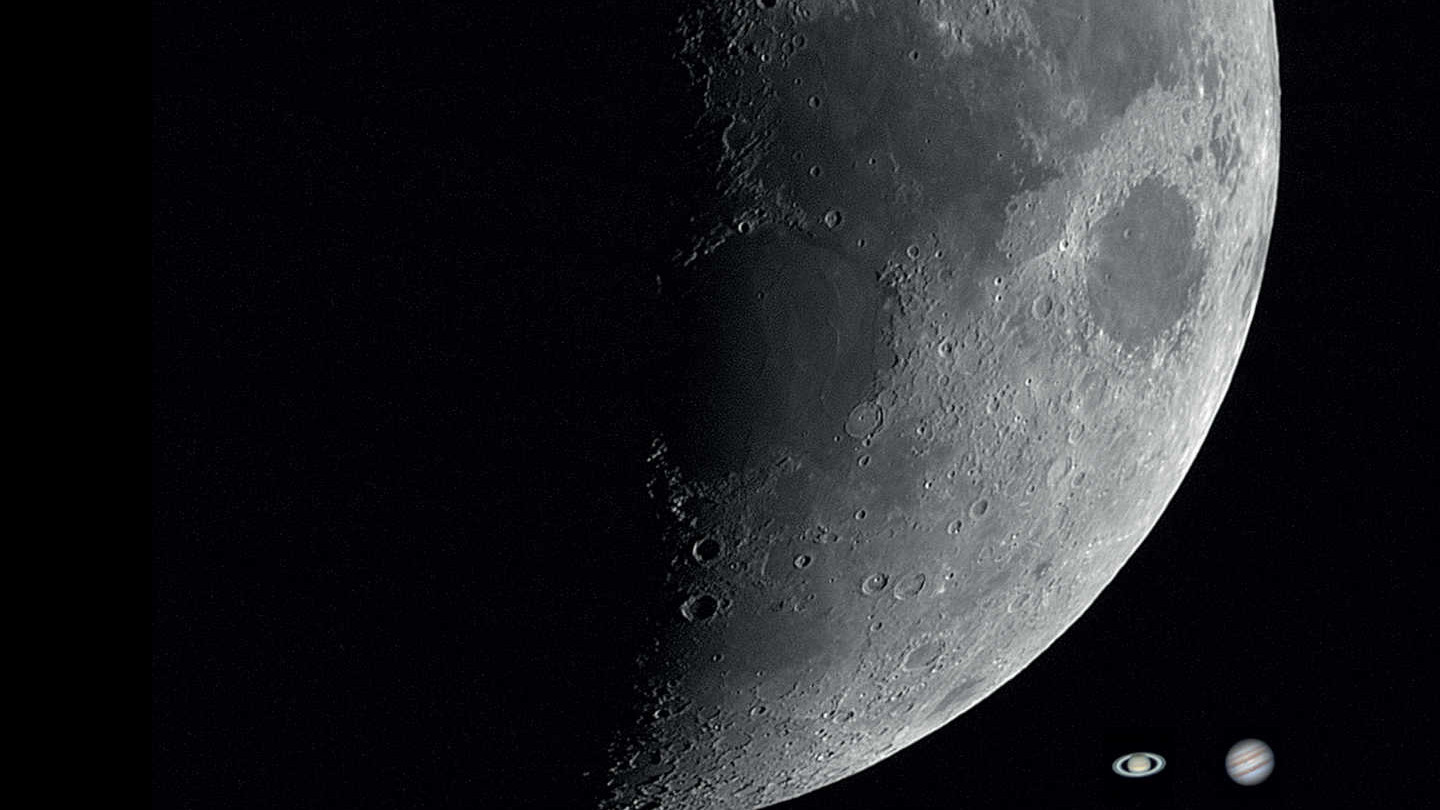 The way the Moon and the planets present themselves to the astrophotographer is quite different: the Sun and Moon are around 0.5° in diameter from our viewpoint, the planets are much smaller. Even Jupiter, the largest planet in our solar system, is only around 30" to 45" in size. U. Dittler
The way the Moon and the planets present themselves to the astrophotographer is quite different: the Sun and Moon are around 0.5° in diameter from our viewpoint, the planets are much smaller. Even Jupiter, the largest planet in our solar system, is only around 30" to 45" in size. U. DittlerThe planets of our solar system are both fascinating and photogenic: Mercury and Venus, the inner planets, show us their different phases, Mars reveals its ice caps and sandstorms, the gas giants Jupiter and Saturn display their changing cloud bands, and the outer planets, Uranus and Neptune, are photographic challenges at the very edge of our solar system.
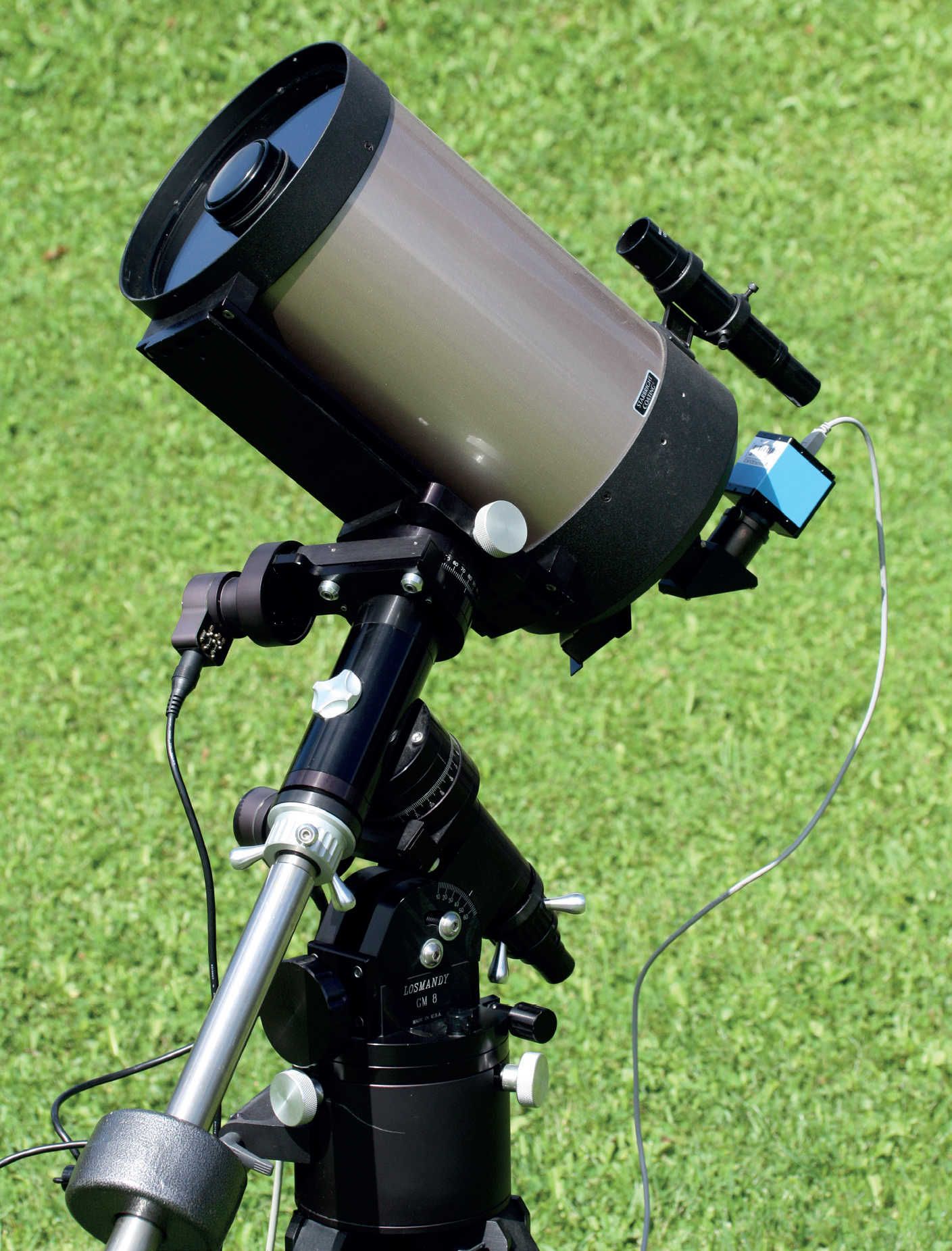 Compact, long-focal-length telescopes such as the Schmidt Cassegrain shown here are ideal for planetary photography. The motor-driven German mount provides precise tracking for the telescope, thus enabling longer exposure image sequences with the connected CCD camera. U. Dittler
Compact, long-focal-length telescopes such as the Schmidt Cassegrain shown here are ideal for planetary photography. The motor-driven German mount provides precise tracking for the telescope, thus enabling longer exposure image sequences with the connected CCD camera. U. DittlerWhat is common to the photography of all the objects of our solar system is that, for some years now, the production of single images no longer dominates the field. Instead, many hundreds or thousands of images are captured with a CCD camera and the sharpest of these are later combined into impressive composite images using digital image processing. In this way, not only can atmospheric turbulence be eliminated from the images, but also camera noise can be reduced. Using this imaging technique together with digital image processing, today’s amateur planetary astrophotography is of a quality that would not have been achievable 20 years ago - even by professional astronomers.
A great variety of planets
Due to their size and the respective position of their orbit (inside or outside the Earth's orbit) individual planets are more or less suited to photography. But they all have their own unique charm:
Jupiter, together with its four Galilean moons Io, Europa, Ganymede and Callisto, is a beautiful sight even through a small telescope, and the movements of the bright moons around the planet can be easily documented photographically. In addition, the shadow cast by the moons on the surface of the gas planet can also be photographed.
Saturn, together with its moon Titan, is also a suitable object for beginners to astrophotography. Ensuring that the Cassini Division, which is just 1" wide, is visible in pictures is usually the first challenge for any aspiring planetary photographers. Just as interesting is to photograph the ringed planets over a period of a few years to see how the angle from which we look at the rings changes over time.
Depending on its position in its orbit, Mars, appears between 4" and 25" in size, and allows you to photographically document its seasons. Regular periods of dust storms on the Red Planet are triggered by the melting ice caps.
Since the orbits of both Venus and Mercury are inside that of the Earth, they are more difficult to observe due to the small angular distance to the Sun. While Venus can be up to 47° from the Sun in the evening or in the morning, the distance between the Sun and Mercury as seen from the Earth is never greater than 27.5°. This proximity of the two planets to our central star and their associated position close to the haze at the horizon considerably complicates photography and restricts the periods in which they can be observed or photographed to the few hours before or after sunrise.
Finally, Uranus and Neptune pose a photographic challenge. The planets appear relatively small (Uranus appears to us as a maximum of 4" in size, Neptune just 2.5"), not very bright, and so quite inconspicuous. Finding these outer planets is therefore comparatively difficult. Accurate finding charts or a GoTo control are helpful here. Nevertheless, it is a nice photographic challenge to capture Uranus and Neptune together with their moons.
Equipment for planetary photography
A long focal length telescope with a large aperture (for example a Newtonian or Schmidt Cassegrain telescope) is suitable for planetary photography because, on the one hand, the large aperture leads to shorter exposure times and, on the other hand, such telescopes also have a higher resolution, making more details visible on the planet. In general, though, refractors and reflectors are equally well suited. Schmidt Cassegrain telescopes are often used for planetary photography, as they not only offer a large aperture and long focal length, but also have a compact and manageable design.
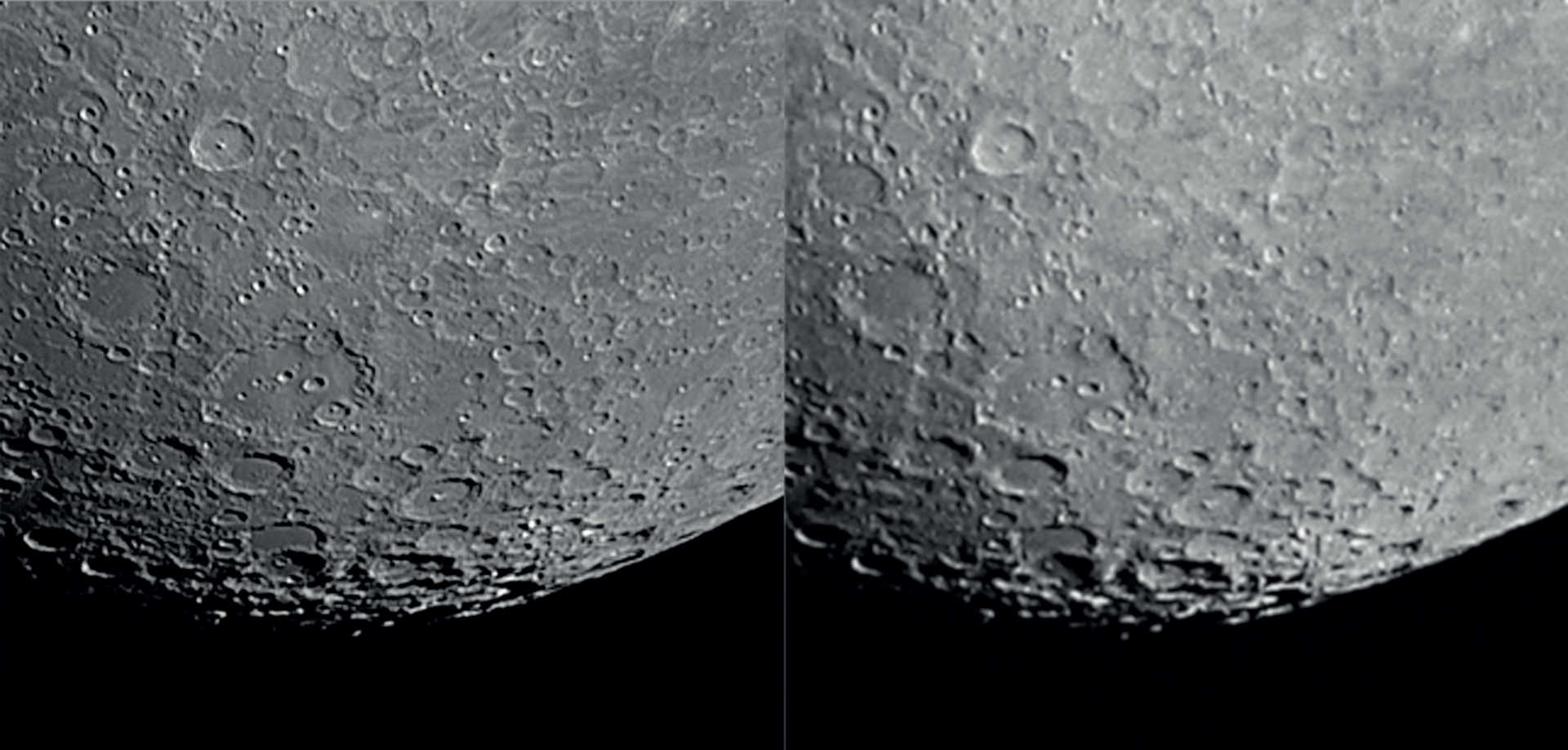 Capturing several hundred images with a CCD camera enables the creation of a composite picture using digital image processing, that is much more detailed than a single image. On the right you can see a single image taken using a refractor (130 mm aperture at 1,000 mm focal length). On the left, a composite picture created from 250 out of 1,000 individual images. U. Dittler
Capturing several hundred images with a CCD camera enables the creation of a composite picture using digital image processing, that is much more detailed than a single image. On the right you can see a single image taken using a refractor (130 mm aperture at 1,000 mm focal length). On the left, a composite picture created from 250 out of 1,000 individual images. U. Dittler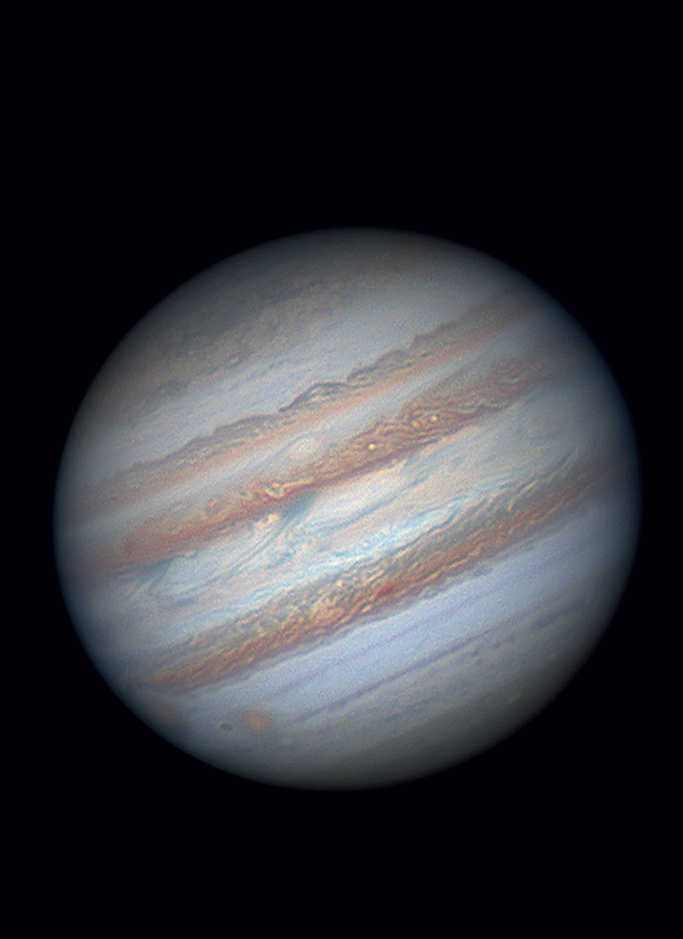 Image of the planet Jupiter. Photographed from the French Alps. The planet’s cloud bands are clearly visible. Mario Weigand
Image of the planet Jupiter. Photographed from the French Alps. The planet’s cloud bands are clearly visible. Mario WeigandWhen using long focal lengths of 1,200 to 4,800 millimetres, which are common with planetary photography, a capable and mechanically sound mount is essential, since it must not cause any vibrations during tracking. At the same time, the mount must ensure that the image of the planet to be photographed remains reliably positioned on the camera chip during the entire exposure sequence. In contrast to deep sky objects, when photographing planets, the objects are relatively bright which allows very short exposure times in the range of fractions of a second to a few seconds – and therefore the requirements for precise tracking are not quite as strict as in deep sky photography.
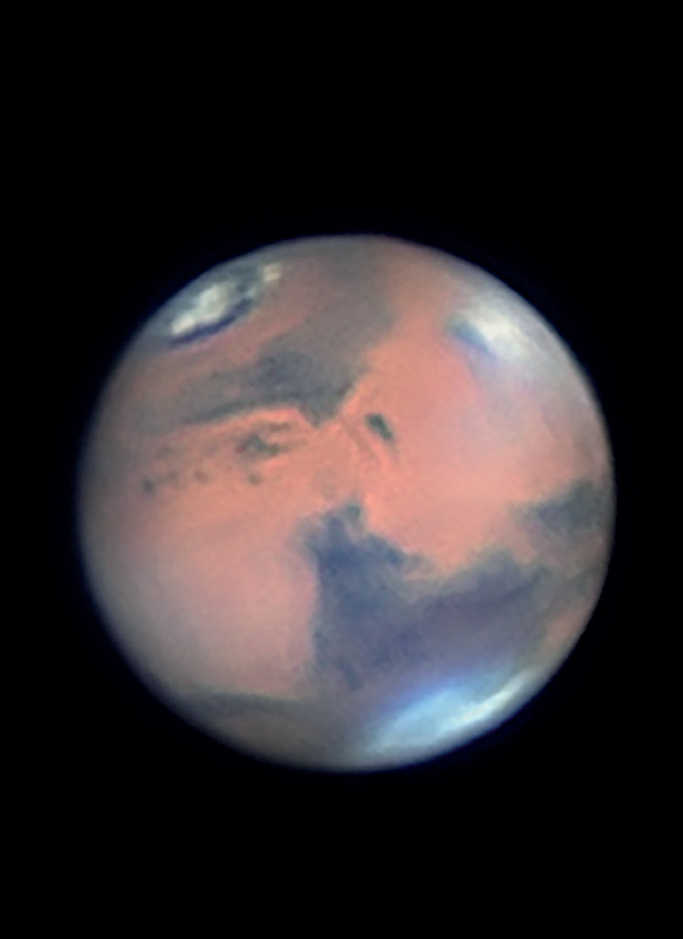 Picture of the planet Mars. The image clearly shows clouds in the region of the large shield volcano Elysium Mons. The largely melted northern polar cap is also very striking. Mario Weigand
Picture of the planet Mars. The image clearly shows clouds in the region of the large shield volcano Elysium Mons. The largely melted northern polar cap is also very striking. Mario WeigandFast, uncooled CCD cameras are used for planetary photography to capture hundreds or thousands of images, the best of which are combined later using digital image processing to create a composite picture. A camera with a high frame rate (at least ten frames per second, some cameras can deliver 30 frames per second) is therefore important, so that a recording sequence of 2,500 images can be "in the can" after just about 1.5 minutes. Since the images of the planets are usually quite small even when using long focal lengths, the camera’s chip size is not usually the limiting factor. However, when choosing a CCD camera for planetary photography, it is also important to consider whether you might later use it for photographing details of the Sun or Moon, in which case the chip size becomes more important. Modern, fast CCD cameras have a USB3 connection. In order to make the most of this, a notebook with an appropriate interface must be available, and which also has sufficient disk space, since 3,000 images from a CCD camera with a slightly larger chip can easily result in 7 to 8 gigabytes of data. And, as a rule, you will usually do more than just one imaging sequence.
Author: Ullrich Dittler / Licence: Oculum-Verlag GmbH
